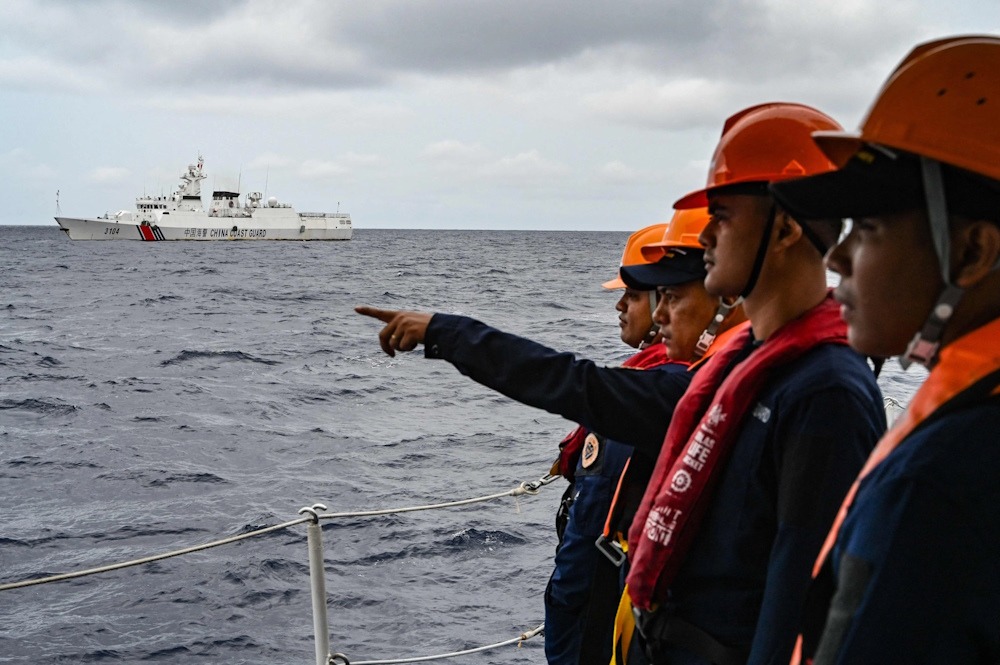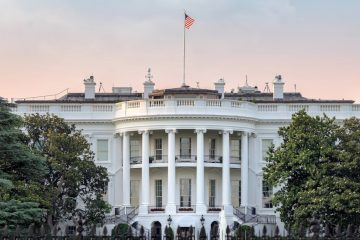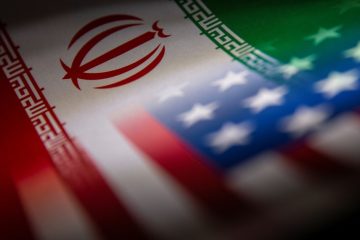Tension arises over the South China Sea

A new area of tension arises as Beijing seeks to assert its dominance over the South China Sea. For months, the Philippines has been standing firm against Beijing’s actions in the South China Sea. China has been showing growing aggression, targeting Philippine vessels and crew with hostility. Now, a 97-meter coast-guard ship has emerged as a powerful symbol of the ongoing struggle between two major global players and the commitment to protect an ally in times of conflict. The recent events surrounding the vessel have highlighted China’s increasing readiness to employ more aggressive measures in order to strengthen its grip on the South China Sea.
For several weeks now, the BRP Teresa Magbanua has remained stationed at Sabina Shoal, a collection of reefs located 75 nautical miles off the western coast of the Philippines. Manila has expressed its intention to closely monitor the site, which falls within its exclusive economic zone, due to the increasing presence of China’s fishing militia and marine research vessels. Additionally, there are indications of possible preliminary land reclamation, which Manila finds concerning.
China has requested that the Philippines remove the ship. According to Beijing, a significant portion of the South China Sea, including the uninhabited Sabina Shoal located 630 nautical miles away from China, is under its ownership. China disregards a ruling made by an international tribunal in 2016, which stated that its claims are not supported by any legal grounds. The presence of Teresa Magbanua at Sabina Shoal is seen as Manila’s effort to establish a lasting presence in the area. Meanwhile, numerous Chinese coast guard and maritime militia vessels continue to patrol, swarm, and monitor disputed reefs and rocks throughout the South China Sea, located hundreds of miles away from its coast.
The situation escalated this week when China deployed its coast guard to confront Philippine authorities. According to Beijing, it is believed that the two Philippine vessels were en route to deliver supplies to the Teresa Magbanua. There were collisions that resulted in significant damage to the Philippine ships, with large holes and extensive damage. According to Manila, the vessels were actually headed in a different direction when they were forcefully rammed by China’s coast guard. China placed blame on the Philippines for the collision.
“They forcefully disrupted the Philippines’ freedom of navigation on the high seas within their exclusive economic zone,” explained Raymond Powell, the director of SeaLight, an initiative that monitors China’s actions in the South China Sea, during a talk at Stanford University’s Gordian Knot Center for National Security Innovation. It seems that their strategy is to prevent the Philippines from winning or challenging them openly. Ever since President Ferdinand Marcos Jr. assumed office in 2022, there has been a noticeable change in the security policies of the Philippines. Manila has taken steps to counter China’s extensive presence in the South China Sea, aiming to regain control over disputed areas, raise awareness of China’s aggressive tactics to garner international backing, and enhance its alliance with the U.S.
At every turn, China has continued to escalate, leading to dangerous encounters on the open waters. The country claims to be safeguarding its sovereignty and maritime rights, while also accusing the Philippines of instigating conflict. There is a significant risk of a potentially dangerous escalation. Keeping a ship at Sabina Shoal indefinitely is not only burdensome for the Philippines, but it has also become a perilous situation. The country has only a few coast-guard vessels of the size of the Teresa Magbanua, while China has a significant number of large vessels. Beijing’s recent response indicates its intention to prevent any attempts to deliver supplies to the stationary vessel or replace it with another ship.
There is a possibility of a similar escalating situation occurring at Sabina Shoal, similar to what has been happening at Second Thomas Shoal for several months. That website houses a small group of Filipino marines. In the past month, whenever the Philippines attempted to send ships to resupply the outpost, China consistently tried to impede them using water cannons and ramming. There was even one incident where Filipino personnel were threatened with axes and knives. A recent agreement seemed to temporarily alleviate tensions in the area, but there is still a possibility of similar confrontations arising near Sabina Shoal. This could potentially lead to conflict and put a strain on the Philippines. Many Chinese vessels have the ability to quickly and unexpectedly move from Mischief Reef, an artificial island that has been converted into a military base, which is situated just 50 nautical miles west of Sabina Shoal.
One alternative for the Philippines could be to consider removing the coast guard ship. That, on the other hand, could be seen as a victory for China. Furthermore, Beijing has significantly increased its deployment of vessels at Sabina Shoal, indicating a potential intention to establish permanent control over the site. It has the potential to block the Philippines’ access and establish a new presence just 75 nautical miles from its coast. “It’s a Catch-22,” remarked Rommel Ong, who served as a vice commander of the Philippine Navy until 2019. We cannot leave Sabina Shoal anymore. If we were to depart, it is highly probable that they would assume control. Ong emphasized the importance of learning from the past and avoiding a situation similar to what occurred at Scarborough Shoal in 2012. During that incident, Philippine ships eventually withdrew after a prolonged standoff, resulting in China gaining control of the area. Currently, the Chinese coast guard and maritime militia maintain a constant presence in the area, preventing the Philippines from accessing its lagoon for fishing or patrols. According to Ong, taking control of Sabina Shoal would further China’s ambitions in the South China Sea. According to the speaker, Beijing aims to assert control over the sea, which is crucial for global trade, and restrict the freedom of other nations to navigate through it.
If the Philippines were to lose access to Sabina Shoal and have to deal with a Chinese presence there, it would make resupplying its outpost on Second Thomas Shoal even more challenging. Sabina Shoal is a crucial meeting point for Philippine forces making their way there. According to Collin Koh, a senior fellow at the S. Rajaratnam School of International Studies in Singapore, China has consistently followed a strategy of gradually encroaching on various locations in the South China Sea and unilaterally challenging the existing order. According to him, the Philippines successfully prevented any such attempts at Sabina Shoal. “By establishing a presence, it signifies a refusal to yield to the Chinese presence,” stated Koh. According to Koh, a single ship would suffice to accomplish that.










